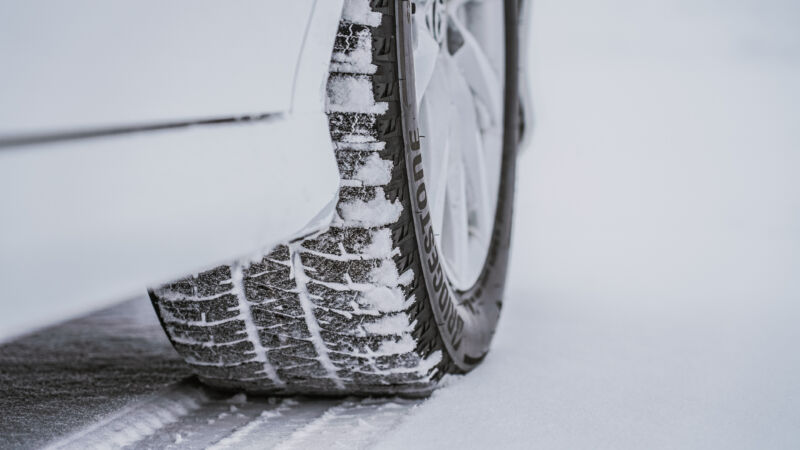

These tires work better in snow thanks to 3D printing
source link: https://arstechnica.com/cars/2020/12/these-tires-work-better-in-snow-thanks-to-3d-printing/
Go to the source link to view the article. You can view the picture content, updated content and better typesetting reading experience. If the link is broken, please click the button below to view the snapshot at that time.

the only bit of your car that touches the road —
These tires work better in snow thanks to 3D printing
Additive manufacturing helps create 3D "sipes" that open and close as you drive.
Jonathan M. Gitlin - 12/22/2020, 12:45 AM

Monday marks the official start of winter here in the US. Not that the weather needs the calendar's permission; many parts of the country started seeing snow weeks ago. And, of course, you don't need to wait for December 21 to swap over to winter tires. For one thing, the sticky compounds used in summer performance tires aren't designed to work when the mercury drops below 45 degrees Fahrenheit (7.2°C), and that can happen well before the ground disappears beneath a layer of snow.
"That has to do with the glass transition temperature of the compounds. The compounds get harder as the ambient temperatures get cooler, and winter tires are designed for a much lower range and temperature," explained Dale Harrigle, chief engineer at Bridgestone.That's partly down to the mixture that makes up a winter tire. "We're using silica tread compounds in our dedicated winter products. We can tune the dedicated winter products to have good grip at lower temperatures without significantly affecting the rolling resistance we would have 20 years ago. So I believe a lot of the compound and material technology is what's enabled some of those leaps in performance," Harrigle told me.
For example, Bridgestone's winter tires employ what Harrigle calls a multi-cell compound, which has lots of little voids or holes in it. "At certain temperatures, ice has a layer of water on it, and it's the layer of water that actually makes the ice slippery. So the multi-cell void in the tire is designed to absorb that layer of water, kind of like a sponge, so that the rubber can get solid contact with the ice. And that's the biggest performance improvement in our Blizzak line—the great ice performance that it provides," he said.
AdvertisementThe voids are microscopic, so you won't see them just by looking closely at a winter tire. What you might see are more complicated tread patterns of cuts and grooves—also called "sipes"—than in tires of days gone by.
"For a very long time, sipes were basically just, you know, a piece of metal in the mold that didn't have any necessary geometry to it. It just sliced into the treadblock... It's like a butter knife, it's a flat blade," Harrigle said.
Now, Bridgestone is taking advantage of additive manufacturing to create tire molds that result in sipes with significant three-dimensional profiles that change as you travel along them (both down into the tire and along the length of the sipe).
"What that 3D profile allows us to do is change the stiffness of the treadblock under braking, under acceleration, so what's happening is that we can put lots of edges in the tire to enable winter traction. But those edges don't affect the tire in terms of wear-life or driving or braking traction. It allows us to get the best of both worlds in tire design," he explained.
Recommend
About Joyk
Aggregate valuable and interesting links.
Joyk means Joy of geeK